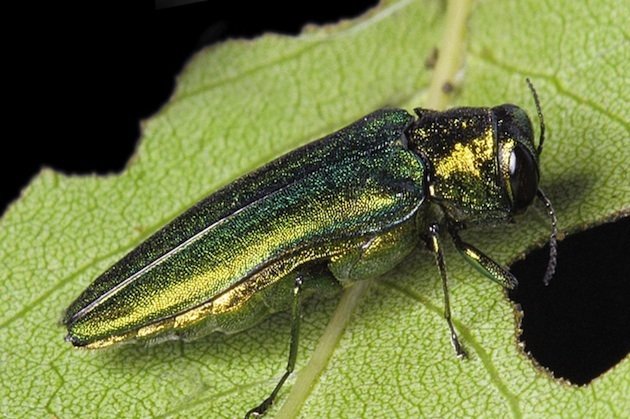
How do you solve a problem like the Emerald Ash Borer (EAB)? With all due respect to Maria von Trapp, combating the greatest infestation that U.S. forests have ever seen may not be as simple as learning to sing “do re mi.” These bark-burrowing beetles, which apparently hitched a ride in cargo shipments from their native Asia, have been starving the ash trees of eastern and midwestern North America to death for a dozen years now. And with no natural predators or resistant trees in their adopted territory, things have been looking pretty grim.
Enter the woodpecker. To be specific, the Red-bellied, Hairy, and Downy Woodpeckers, along with the White-breasted Nuthatch. These birds may be the North American ash tree’s last line of defense against the EAB invasion.
A study in the journal Biological Invasions used Project FeederWatch information to determine that populations of the above-named birds increased (although the Hairies and Downies initially decreased) in areas of heavy EAB infestation. This research suggests that the boom isn’t due to an influx of newcomers, but rather because more local birds are flourishing and successfully rearing families. “At some level what we confirm is that the ecological consequences of an invasion such as that of the EAB are complex and difficult to predict,” study coauthor Walter D. Koenig, from the Cornell Lab of Ornithology, told 10,000 Birds.
Another paper recently published in Forest Ecology and Management documented that EAB predators’ behavior matches their growing numbers. Specifically, researchers found that in EAB-infested areas, the birds preferred ash trees to other trees, and seemed to favor the ashes with the most severe damage. In an interview with 10,000 Birds, coauthors Charles E. Flower, from the University of Illinois at Chicago, and Christopher J. Whelan, from the Illinois Natural History Survey, explained, “The increased utilization of EAB-infested ash trees by woodpeckers and bark-foraging birds observed in our study demonstrates that woodpeckers are able to shift their behavior to actively target EAB.”
Despite their valiant efforts (and hearty appetites), the woodpeckers and nuthatches may not be a magic bullet. “There are some data suggesting that they can depredate quite a surprisingly high percentage of emerald ash borer larvae in some forests,” points out Koenig. “It’s unlikely that this would be enough to stop the invasion, but it could certainly slow it down, at least in some areas.”
Even the cursed “polar vortex” which produced bone-chilling temperatures throughout large chunks of the United States in early 2014 doesn’t seem to have been long or cold enough to cause EAB die-off. If the course of the invasion runs as predicted, according to Flower and Whelan, then “ash is likely to go the way of elm trees that were largely eradicated from the landscape by Dutch elm disease.” In the meantime, they add, “Woodpeckers provide one of the few natural predators to EAB and their response may help slow the spread.” The scientists interviewed for this article agreed that the decline of ash trees from North American forests will create opportunities for other trees and fauna to take their place, and in doing so may change up the diversity of bird populations. (Whether for better or worse, it’s not easy to say.)
If there is one silver lining to all of this gloomy news, it’s that the efforts of birders truly make a difference in helping to advance science. Data from Project FeederWatch and similar efforts “play a critical role in almost any attempt to assess the populations of animals at large geographic scales as well as the ecological consequences of an invasion such as that of the EAB,” Koenig states. “Given the increasing prominence of such phenomena, citizen science projects such as FeederWatch and eBird are likely to play an even greater role in the future!”
(Emerald Ash Borer photo from University of Kentucky Forestry Extension; Red-bellied Woodpecker above by Corey; White-breasted Nuthatch below by Mike)
…
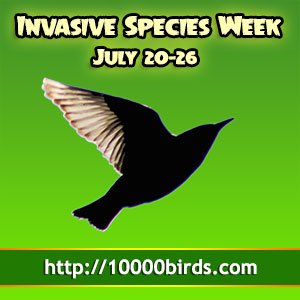 Here at 10,000 Birds 20 July – 26 July is Invasive Species Week. We use the term “Invasive Species” in the broadest sense, to encompass those invasive species that have expanded beyond their historical ranges under their own power, by deliberate introduction, or by unintentional introduction. The sheer number of species that have been shuffled around on our big earth is impressive, though we will be dealing with the smaller sample size of invasive avians and other invasives that effect avians. Nonetheless, this week will be chock full of invasive species. So batten down the hatches, strap on your helmet, and prepare to be invaded! To access the entire week’s worth of content just click here.
Here at 10,000 Birds 20 July – 26 July is Invasive Species Week. We use the term “Invasive Species” in the broadest sense, to encompass those invasive species that have expanded beyond their historical ranges under their own power, by deliberate introduction, or by unintentional introduction. The sheer number of species that have been shuffled around on our big earth is impressive, though we will be dealing with the smaller sample size of invasive avians and other invasives that effect avians. Nonetheless, this week will be chock full of invasive species. So batten down the hatches, strap on your helmet, and prepare to be invaded! To access the entire week’s worth of content just click here.


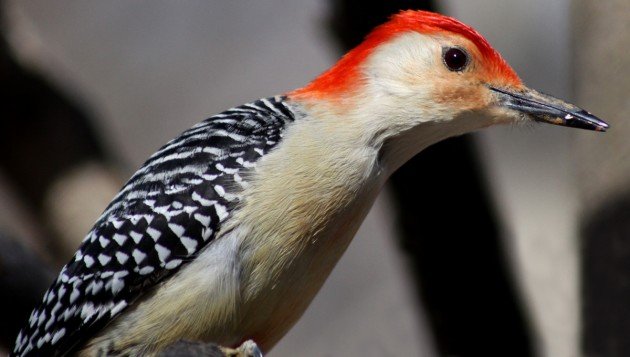
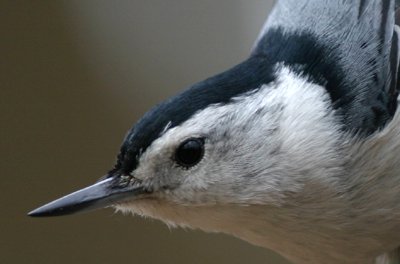





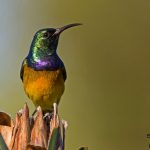


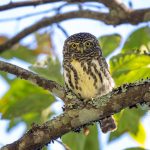


This has been readily apparent the last 2-3 Christmas Count Seasons here in the Albany, NY area, where many counts have seen record numbers of Woodpeckers and White-breasted Nuthatches. In particular, Red-bellied Woodpeckers have seem to have benefited the most.